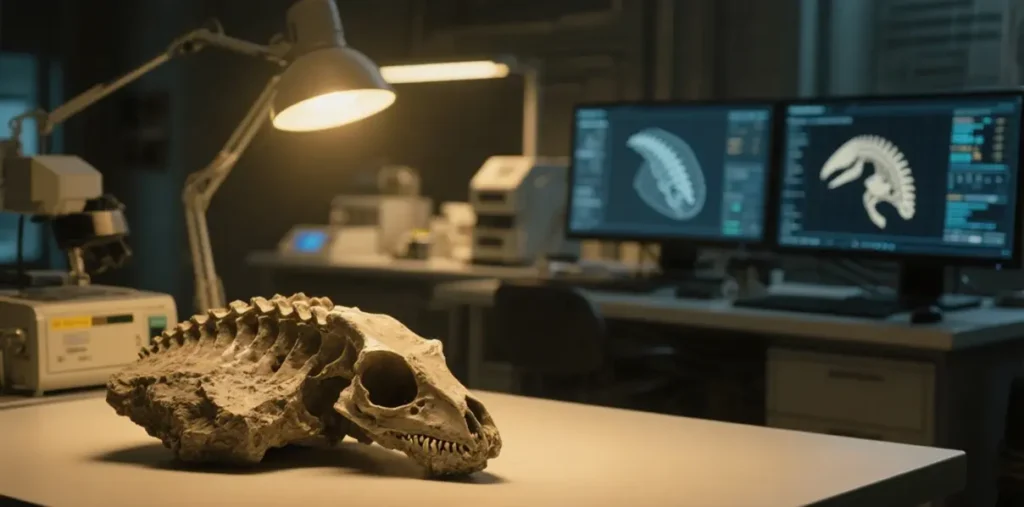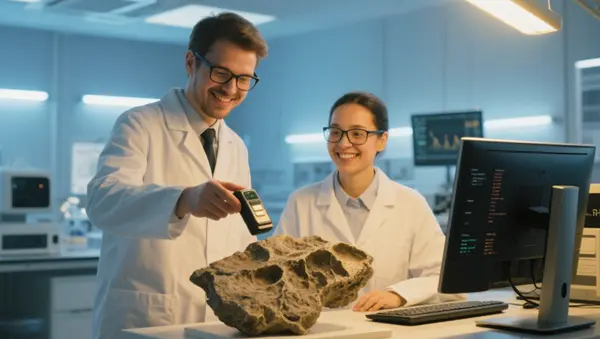
RFID Technology Transforms Paleontological Asset Management
Custom Your RFID Cards
Introduction: From Ancient Fossils to Digital Management
Paleontological fossils are precious evidence of Earth’s evolutionary history. Managing their entire lifecycle, from excavation to exhibition, is crucial. Traditional methods using manual records and paper archives are inefficient and prone to information loss or specimen damage. Recently, Berntsen and HID launched the InfraMarker RFID solution, which has shown exceptional performance in managing paleontological assets. This solution won the RFID category award at the AIM International Case Study Competition, providing an innovative model for the digital management of fossils and other special assets.

Technological Integration: Collaborative Innovation Between RFID and GIS
The core breakthrough of this solution lies in the deep integration of RFID (radio frequency identification) and GIS (geographic information system), rather than a simple combination of technologies.
RFID: Giving Fossils a “Digital ID Card”
Each fossil is embedded with an RFID tag that records its entire lifecycle data (excavation time, repair records, storage location, etc.).
Using specialized devices (such as HID’s mobile RFID readers), data can be quickly read non-contact, eliminating human recording errors.
GIS: Spatial Data Visualization and Analysis
Combined with the GIS system, the excavation locations and circulation paths of fossils can be intuitively displayed on maps.
Researchers can overlay geological layers to analyze the sedimentary environment of fossils, providing new perspectives for paleontological research.
Mike Krawczyk, President of Berntsen International, emphasized: “The innovation of InfraMarker lies in the synergistic effect of RFID’s precise identification and GIS’s spatial analysis, rather than merely combining technologies.”
5 Advantages of RFID in Paleontological Asset Management
Compared to traditional management methods, RFID technology offers significant advantages:
1. Precise tracking throughout the entire lifecycle, eliminating specimen loss
RFID tags are waterproof, corrosion-resistant, and withstand extreme temperatures, making them suitable for harsh outdoor environments (such as deserts and caves).
They support contactless reading (within several meters), avoiding manual recording errors, with tracking accuracy exceeding 99%.
2. Digital data management, enhancing information integrity
Cloud-based databases store multi-dimensional information (such as excavation time, geographic coordinates, and restoration records), supporting real-time updates.
Standardized data facilitates cross-institutional sharing (among research teams, museums, and conservation organizations), breaking down information silos.

3. Efficient automated processes, reducing labor costs
Batch identification functionality significantly improves efficiency (in the case study, 347 fossil records were completed in 5 days, far exceeding traditional methods).
Automated data upload reduces manual entry errors, allowing researchers to focus on analysis rather than administrative tasks.
4. Adapting to complex scenarios and overcoming environmental constraints
Offline mode supports environments without internet connectivity (e.g., remote excavation sites), with data synchronized to the cloud later.
Compared to barcodes, RFID can be read without direct line of sight, making it suitable for fossils in packages, buried items, or complex terrains.
5. Long-term asset traceability, supporting research and conservation
RFID Tags have a lifespan of over 10 years, continuously recording fossil status (repair history, exhibition records, etc.).
Museums can combine RFID with smart inventory management and theft prevention alerts (e.g., triggering alarms when unauthorized movement occurs).
Industry Impact and Future Application Prospects
Beyond fossil management: a universal solution for special assets
This technology can be extended to fields such as archaeological artifacts, nuclear power plant equipment, and infrastructure in remote areas.
AIM evaluates it as “providing a replicable model for industry digital transformation.”
Promoting scientific research and cultural heritage protection
Precise data management provides a reliable foundation for paleontological research while aiding in the long-term preservation of cultural heritage.
Future technological evolution directions
Future applications may integrate AI data analysis and blockchain anti-counterfeiting traceability to further enhance management intelligence.
Conclusion: Technology Empowerment, Bridging the Ancient and the Future
The Berntsen and HID InfraMarker solution is not only a technological breakthrough but also demonstrates the profound impact of digital tools on scientific research and cultural heritage preservation. When every fossil can be precisely tracked and properly preserved, the connection between humanity and the ancient world becomes clearer and more reliable. This case also offers important insights for asset management in other industries: technological integration and innovation are key to addressing complex management challenges.


